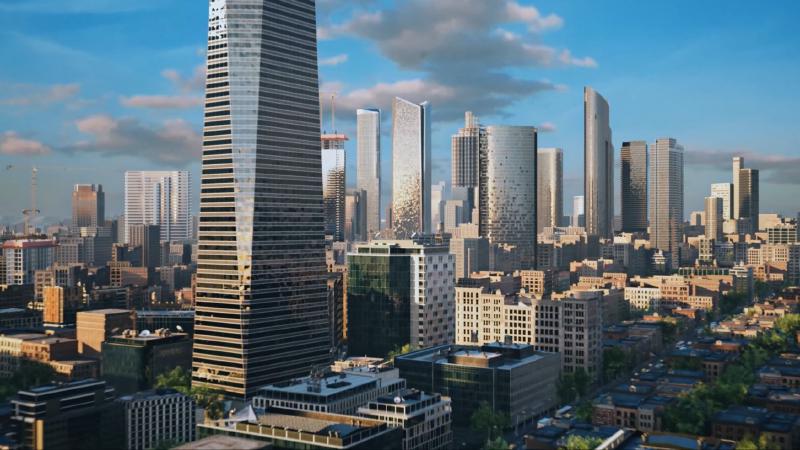Paradox have released the first three videos in a series of feature highlights that will showcase the new and improved aspects of the game, ranging from familiar features that have been expanded, to elements brand new to the franchise. The first three feature highlights that have been revealed so far: Road Tools, Traffic AI and Public & Cargo Transportation.
Feature Highlight 1: Road Tools
Roads are the backbone of a city, so naturally, they are one of the most important aspects of the game. Building roads in Cities: Skylines 2 is more flexible than its predecessor and allows for more creative use of the tools to help you realise your vision for the perfect road layout. You will find a variety of both new and returning options with road angles and enhanced curve tools to help you to create the road network of your dreams.
Some of the new features include:
- Grid mode: This allows you to create seamless city blocks with just three clicks. You can easily adjust the width and length of the grid and see the layout before placing it.
- Replace tool: This is similar to the old Upgrade tool but allows you to change existing roads more freely and fine-tune the road network by adding grass, trees, wider sidewalks or sound barriers.
- Parallel mode: This makes it possible to automatically build two roads, such as highways, in parallel, at a fixed and customizable distance. You can use all other road tool modes with this feature, so creating beautiful, smooth highway curves is possible and easy.
- Cut-and-fill roads: This allows you to build roads on uneven terrain without creating unrealistic slopes or bridges. The terrain will automatically adjust to fit the road level.
Feature Highlight 2: Traffic AI
Managing traffic in a growing city was a core part of Cities: Skylines and for the sequel we wanted to bring you a more advanced system to make the city feel more realistic and alive. The Traffic AI has been improved to make the vehicles behave more naturally and intelligently on the roads. Some of the improvements include:
- Lane changing: Vehicles can now change lanes dynamically based on their destination and traffic conditions. They can also use multiple lanes when turning or merging.
- Traffic lights: Traffic lights can now be customized to suit different intersections and traffic flows. You can also add pedestrian crossings and bike lanes to improve safety and accessibility.
- Parking: Parking is now a separate layer from roads, which means you can add parking lots or garages anywhere in your city. Vehicles will look for available parking spaces near their destination and park there until they need to leave.
- Emergency vehicles: Emergency vehicles can now use sirens and lights to alert other drivers and pedestrians of their presence. They can also overtake slower vehicles or use opposite lanes if necessary.
Feature Highlight 3: Public & Cargo Transportation
An integral part of a city’s inner workings is public transportation. Expanding as the city grows from buses and taxis to other transportation systems such as tram and subway networks. Public transportation not only reduces traffic congestion and pollution, but also increases the happiness and mobility of your citizens. Some of the new features include:
- Bus lanes: Bus lanes are dedicated lanes for buses and other public transportation vehicles. They can help improve the efficiency and reliability of your bus network and reduce the interference from other traffic.
- Taxi stands: Taxi stands are places where taxis can wait for passengers or drop them off. They can help improve the accessibility and convenience of your taxi service and reduce the congestion caused by taxis stopping on the road.
- Tram depot: Tram depot is a place where trams are stored and maintained. It can also act as a hub for your tram network, allowing you to create loops or branches.
- Subway station: Subway station is a place where passengers can enter or exit the subway system. It can also connect to other transportation modes, such as buses or trams, to create a seamless transit network.
